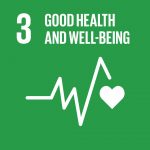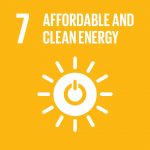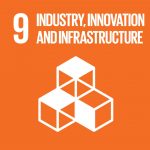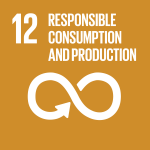Methodology
“GRI standards are designed to help companies formulate standardized CSR reports.”
Since its establishment, the Blue Lagoon has placed great emphasis on social responsibility, which has evolved over the years in line with changes within the company and society.
For ten years, the Blue Lagoon has published the company’s annual report, which has contained both financial and non-financial information. Over the last three years, the annual report has been further developed and is now prepared in accordance with Global Reporting Initiative Standards (GRI), with a special emphasis on corporate social responsibility (CSR). GRI is a non-profit organization, which promotes economic sustainability and produces one of the world’s best-known standards for corporate social responsibility reporting.
In preparing the report, special attention is paid to the following factors: accuracy, balance, clarity, comparability, integrity, timeline, verification. This report is prepared in accordance with the requirements of GRI standards with a special emphasis on sustainability.
| Last published | 2022 for the 2021 operating year |
| Reporting period | January 2021 – December 2021 |
| Frequency of reporting | Annually |
| GRI standards | Core option |
“Blue Lagoon Iceland has reported in accordance with the GRI Standards for the period January 2021 – December 2021 (Core Option)”
The report was published in April 2022. Further information on the report can be obtained by contacting sustainability@bluelagoon.is
Shared value
Human resources
| Recruitment 2021 | In percentage |
|---|---|
| Woman | 60 % |
| Man | 40 % |
| Foreign nationals | 32 % |
| Icelanders | 68 % |
| Age < 30 | 42 % |
| Age from 30 to 50 | 50 % |
| Age > 50 | 8 % |
| Employees turnover 2021 | In percentage |
|---|---|
| Women | 6 % |
| Men | 4 % |
| Foreign nationals | 3 % |
| Icelanders | 7 % |
| Age < 30 | 5 % |
| Age from 30 to 50 | 5 % |
| Age > 50 | 1 % |
| Maternity and paternity 2021 | Proportion that returned to work after leave |
|---|---|
| Females | 75% |
| Males | 100% |
Material topics
In 2019, the Blue Lagoon defined the following priorities, which will continue until 2022:
| Economic | 200 |
|
Economic Performances Market Presence Procurement Practices |
201 202 204 |
| Environmental | 300 |
|
Materials Energy Water & Effluents Emissions Effluents and Waste Environmental Compliance |
301 302 303 305 306 307 |
| Social | 400 |
|
Employment Occupational Health and Safety Training and Education Diversity and Equal Opportunities Non-discrimination Local Communities Customer Health and Safety |
401 403 404 405 406 413 416 |

3 – GOOD HEALTH AND WELL-BEING

7 – AFFORDABLE AND CLEAN ENERGY
Ensure access to affordable, reliable, sustainable and modern energy.

9 – INDUSTRY, INNOVATION AND INFRASTRUCTURE

12 – RESPONSIBLE CONSUMPTION AND PRODUCTION
Ensure sustainable consumption and production patterns.

13 – CLIMATE ACTION
Take urgent action to combat climate change and its impacts.
GRI INDEX
|
GRI Content Index – GRI Standard Disclosure |
Location |
|
|
Universal Standards |
||
| 101 | Foundation | |
| 102 | General Disclosure | |
| 1. Organizational profile | ||
| 102-1 | Name of the organization | Financial performance |
| 102-2 | Activities, brands, products and services | |
| 102-3 | Location of headquarters | |
| 102-4 | Location of operations | |
| 102-5 | Ownership and legal form | Financial performance |
| 102-6 | Market served | Blue Lagoon Universe |
| 102-7 | Scale of the organization | |
| 102-8 | Information on employees and other workers | Human resources |
| 102-9 | Supply chain | |
| 102-10 | Significant changes to the organization and its supply chain | |
| 102-11 | Precautionary Principle approach | |
| 102-12 | External initiatives | |
| 102-13 | Membership of associations | |
| 2. Strategy | ||
| 102-14 | Statement from senior decision-maker | |
| 3. Ethics and integrity | ||
| 102-16 | Values, principles, standards and norm of behavior | |
| 4. Governance | ||
| 102-18 | Governance structure | Corporate Governance |
| 5. Stakeholder engagement | ||
| 102-40 | List of stakeholder groups | Stakeholders engagement |
| 102-41 | Collective bargaining agreements | |
| 102-42 | Identifying and selecting stakeholders | Stakeholders engagement |
| 102-43 | Approach to stakeholder engagement | Stakeholders engagement |
| 102-44 | Key topics and concerns raised | |
| 6. Reporting practice | ||
| 102-45 | Entities included in the consolidated financial statements | Financial performance |
| 102-46 | Defining report content and topic Boundaries | |
| 102-47 | List of material topics | |
| 102-48 | Restatements of information | Methodology |
| 102-49 | Changes in reporting | Methodology |
| 102-50 | Reporting period | Methodology |
| 102-51 | Date of most recent report | Methodology |
| 102-52 | Reporting cycle | Methodology |
| 102-53 | Contact point for questions regarding the report | Methodology |
| 102-54 | Claims of reporting in accordance with the GRI Standards | Methodology |
| 102-55 | GRI content index | Methodology |
| 103 | Management approach | |
| 103-1 | Explanation of the material topic and its Boundary | |
| 103-2 | The management approach and its components | |
| 103-3 | Evaluation of the management approach | |
| Topic-specific Standards | ||
| 200 | Economic | |
| 201 | Economic performance | |
| 201-1 | Direct economic value generated and distributed | |
| 202 | Market presence | |
| 202-2 | Proportion of senior management hired from the local community | Human resources |
| 204 | Procurement practices | |
| 204-1 | Proportion of spending on local suppliers | |
| 300 | Environment | |
| 301 | Materials | |
| 301-1 | Materials used by weight or volume | |
| 301-2 | Recycled input materials used | |
| 302 | Energy | |
| 302-1 | Energy consumption within the organization | |
| 302-2 | Energy intensity | |
| 302-3 | Reduction in energy consumption | |
| 303 | Water and effluents | |
| 303-3 | Water withdrawal | |
| 303-4 | Water discharge | |
| 303-5 | Water consumption | |
| 305 | Emissions | |
| 305-1 | Direct (Scope 1) GHG emissions | |
| 305-2 | Energy indirect (Scope 2) GHG emissions | |
| 305-3 | Other indirect (Scope 3) GHG emissions | |
| 306 | Waste | |
| 306-2 | Waste by type and disposal method | |
| 307 | Environmental compliance | |
| 307-1 | Non-compliance with environmental laws and regulations | |
| 400 | Social | |
| 401 | Employment | |
| 401-1 | New employee hires and employee turnover | Human resources |
| 401-2 | Benefits provided to full-time employees that are not provided to temporary or part-time employees | Human resources |
| 401-3 | Parental leave | Methodology |
| 403 | Occupational health and safety | |
| 403-1 | Occupational health and safety management system | |
| 403-2 | Hazard identification, risk assessment and incident investigation | |
| 403-3 | Occupational health services | |
| 403-4 | Worker participation, consultation and communication on health and safety | |
| 403-5 | Worker training on occupational health and safety | Human resources |
| 403-6 | Promotion of worker health | |
| 403-9 | Work-related injuries | Heath and safety |
| 403-10 | Work-related ill health | Heath and safety |
| 404 | Training and education | |
| 404-1 | Average hours of training per year per employee | Human resources |
| 404-2 | Programs for upgrading employee skills and transition assistance programs | Human resources |
| 405 | Diversity and equal opportunity | |
| 405-1 | Diversity of governance bodies and employees | |
| 405-2 | Ratio of basic salary and remuneration of women to men | |
| 406 | Non-discrimination | |
| 406-1 | Incidents of discrimination and corrective actions taken | |
| 413 | Local communities | |
| 413-1 | Operations with local community engagement, impact assessment and development programs | |
| 416 | Customer health and safety | |
| 416-1 | Assessment of health and safety impacts of product and service categories | |


